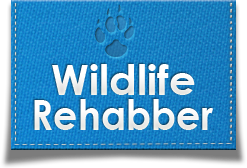It’s important to remember that when wildlife are being a nuisance, that they aren’t being malicious. They have “conveniently” found an element on your property that they need for survival (food, water, shelter, space, nesting location, etc). By identifying what is drawing the bird to the property or contributing to the nuisance behavior, it is … Continue Reading
Additional Resources Duck Management Integrated solutions to resolving problems with geese. Geese, Ducks and Swans: Wildlife Damage Control OvoControl, “birth control” for geese and other avian species. ?Products Click on the products for a direct link to product details and purchasing information. 1-pint Goose Chase Goose Stopper Repellent — Quart Hose-end Bottle Two-dimensional Coyote Decoy … Continue Reading
So often, we hear “why not let nature takes its course” when dealing with the public regarding wildlife rehabilitation. Here are some eye-opening estimates of “un-natural” mortality. Death By Cat Cats, both feral and domestic, are among the biggest contributors to wildlife mortality. Cat predation accounts for the deaths of hundreds of millions of birds … Continue Reading
There are a lot of ways to directly and indirectly help wildlife. Volunteer In addition to becoming a wildlife rehabilitator, there are a number of ways you can volunteer: Assist a rehabilitator or at a facility by volunteering. Volunteer to answer phones a few hours per month. Volunteer at fundraisers Don’t have the time to … Continue Reading
Osmosis — passive transport of water across a semipermeable membrane. Water tends to move across the membrane until the solute concentration (the amount of solids) on both sides are the same. When water concentration is high in one compartment, there will be a net diffusion of water into the other compartment and also a diffusion … Continue Reading
Bird spikes are a humane method of deterring birds from roosting on man-made structures. Please DO NOT use pastes or gels as a bird repellent or deterrent. These pastes and gels permanently stick to a bird’s feet and feathers and will eventually impair their ability to fly. The only way to remove the paste is … Continue Reading
This article was submitted by Mary Anna Babcock Cottontail bunnies are small, fragile and fluffy, and bring out the nurturing nature of humans. Unfortunately cottontail bunnies often die of stress from the good intentions of people who do not trust nature to provide adequate protection for these young animals. The female creates a nest for … Continue Reading
Quick Links If You Have Found A Baby Bird If You Have Found A Baby Squirrel If You Have Found A Baby Bunny If You Have Found A Duckling If you have found a species that is not listed above, please contact a Wildlife Rehabilitator by phone (not by email) for specialized assistance. Please do … Continue Reading
Due to extensive loss of habitat, some species of birds have adapted by utilizing the eaves, dryer and stove vents of homes for nesting cavities. Most homeowners are aware of this problem, but wait until nesting season to correct the situation. I can hear the babies. How much longer before they leave? What can I … Continue Reading
It is critical to to determine if the baby is a good candidate for renesting, or if the baby should be taken to a wildlife rehabilitator for further care. Use the steps outlined in the table below as a guide. Step 1: Screen for Illnesses/Injuries Is it injured? Any evidence of blood in any amount, … Continue Reading
